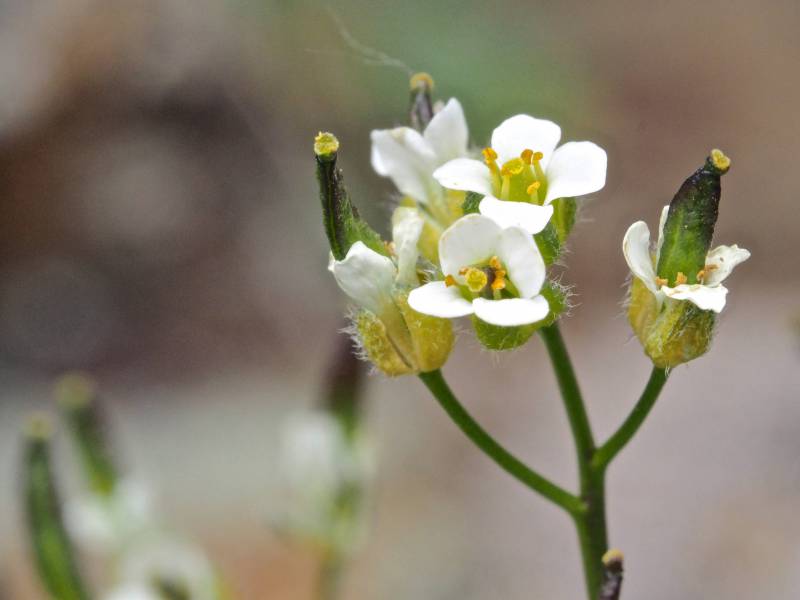Hosted by the University of Washington Herbarium, Burke Museum
Publication: Mem. New York Bot. Gard. 1: 181. 1900.
Origin: Native
selected vouchers: WTU
Notes: FNA7: "Draba lonchocarpa is a highly variable species within which O. E. Schulz (1927), G. A. Mulligan (1974), and R. C. Rollins (1993) recognized three to five varieties. By contrast, C. L. Hitchcock (1941) united it with D. nivalis and recognized six varieties (see 68. D. nivalis for differences). Some of the infraspecific taxa of D. lonchocarpa are based on trivial characteristics and are listed in the synonymy above without further comment. The most problematic are briefly discussed below.
Authors recognizing var. vestita claim that it differs from var. lonchocarpa by having pubescent (versus glabrous) stems and pedicels, 1- or 2-leaved (versus 0 or 1-leaved) scapes, and fruits appressed (versus not appressed) to the rachises. These characteristics do not appear to be strongly correlated. A case in point is the holotype sheet of var. semitonsa, which includes plants with puberulent or glabrous fruits, as well as with pubescent and glabrous stems that are 0-4-leaved. Leafless and densely pubescent scapes are found in Trelease 3913 (MO), whereas completely glabrous, 0-2-leaved stems, and fully appressed fruits are found in Calder 5617a (DAO). Other exceptions can be cited, though the vast majority of the plants examined have leafless, glabrous scapes.
An examination of the type collections of var. thompsonii, Thompson 9512 (holotype, UC; isotypes, DS, GH, MO, NY, RSA, US), clearly shows that the taxon usually has oblong to lanceolate fruits 2-3.2 mm wide, as opposed to linear fruits less than 2 mm wide in var. lonchocarpa. Indeed, a casual observation would immediately justify the recognition of var. thompsonii. Both fruit types can be found in plants of the same population (e.g., the RSA isotype) or even on the same plant (e.g., Thompson 10816, MO). Furthermore, fruits to 2.5 mm wide occur sporadically in various parts of the species range. For these reasons, and in the absence of a comprehensive study of the species, we choose to not recognize var. thompsonii at present."
References: (none)

